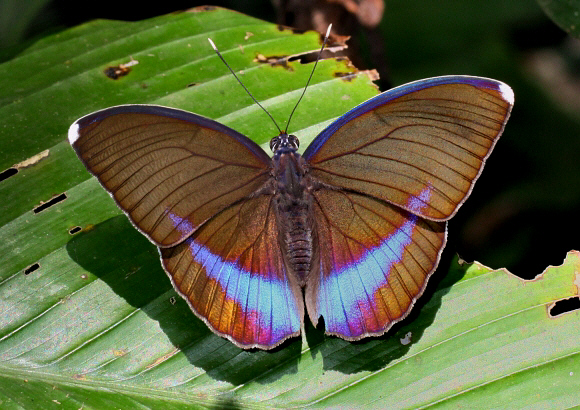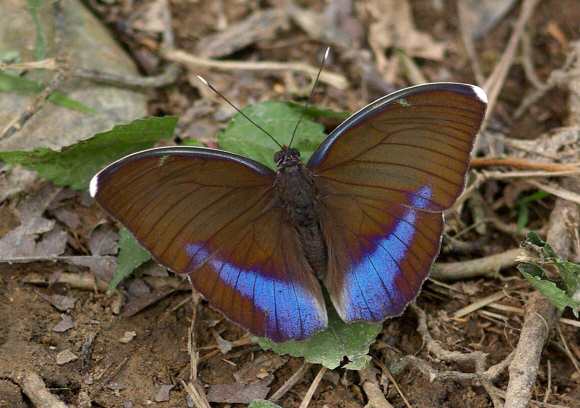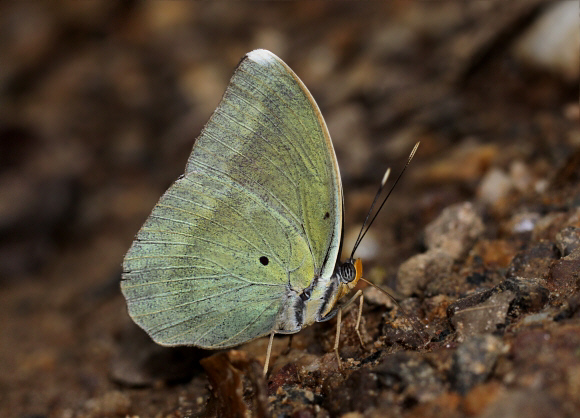
Introduction
The genus Euphaedra comprises of a yet to be discerned number of large and very beautiful forest-dwelling butterflies, all found on the African continent. In 1997 Hecq revised the genus and at that time listed a total of 180 species. This figure is challenged by other workers who believe that many of these are merely local forms or subspecies. However in 2012 Hecq produced a further revision of the eleus species-group, describing an additional 12 species, bringing the total in the genus to 192. When working in the field it is immediately obvious that there are a huge number of specimens that are noticeably dissimilar to any of the insects illustrated by Hecq but it is unclear whether these are examples of intra-specific variation, distinct taxa or hybrids.
All Euphaedra species share a common wing shape. Most have a similar pattern on the upperside – typically the basal areas of the wings ( particularly the hindwings ) have large suffused patches of metallic blue, green, orange or red. Most species also have a cream or orange sub-apical bar. The undersides are usually some shade of yellow or green, marked with black spots and streaks that vary in intensity and configuration according to taxon and locality. Many species also have beautiful pink patches or streaks on the underside hindwings.
Euphaedra species are renowned for their beauty, and harpalyce is one of the most beautiful. Both sexes are similar in appearance, but the females usually have a narrow yellowish sub-apical band on the forewing. The closely related species eupalus is identical to harpalyce on the upper surface. On the underside harpalyce is bluish-green with a suffused dark transverse band, while eupalus is pale olive with a series of white post discal spots. There are also several similar butterflies in the genus Bebearia e.g. phantasina, phantasiella and maladicta, but in all of these the outer margin of the forewings is very concave.
Euphaedra harpalyce is distributed from Guinea-Bissau to Uganda and western Kenya.

Habitats
This species is common in secondary forest as well as intact rainforest.
Lifecycle
The larval foodplants include Allophylus, Blighia, Lecaniodiscus, Paullinia and Phialodiscus, all in the family Sapindaceae.
Adult behaviour
Both sexes fly close to the ground, elegantly weaving their way through the forest undergrowth. They do not settle as frequently as other Euphaedra species, but when they do, it is usually on a large leaf, and in full sunshine. They are attracted to clusters of fallen fruits, although again not as frequently or in as great abundance as with other members of the genus.

